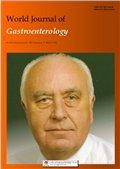三维可视化技术引导一步经皮经肝胆管镜碎石术治疗复杂肝结石
IF 4.3
3区 医学
Q1 GASTROENTEROLOGY & HEPATOLOGY
引用次数: 0
摘要
背景胆道结石病是一种高发疾病,也是全球住院治疗的主要原因。伴有狭窄的肝结石在经过传统的多环节经皮经肝胆道镜碎石术(PTCSL)后,残留率和复发率很高。目的 研究在三维(3D)可视化引导下使用经皮经肝一步法胆道造瘘(PTOBF)技术的一步法 PTCSL。方法 这是一项回顾性单中心研究,分析了在 2016 年 10 月至 2023 年 10 月期间接受一步式 PTCSL 治疗肝结石的 140 例患者。患者被分为两组:3D-PTOBF 组和 PTOBF 组。评估胆道镜检查结石清除率、并发症、长期清除率和复发率。结果 两组患者的年龄、总胆红素、直接胆红素、Child-Pugh 分级和结石位置相似,但胆管狭窄有显著差异,3D-PTOBF 组胆管狭窄更常见(P = 0.001)。中位随访时间为 55.0 (55.0, 512.0) 天。3D-PTOBF 组的结石即时清除率(88.6% vs 27.1%,P = 0.000)和狭窄消除率(97.1% vs 78.6%,P = 0.001)明显高于 PTOBF 组。术后并发症(8.6% vs 41.4%,P = 0.000)和结石复发率(7.1% vs 38.6%,P = 0.000)在 3D-PTOBF 组明显较低。结论 三维可视化有助于使一步法 PTCSL 成为复杂性原发性肝结石患者的一种安全、有效、前景广阔的治疗方法。复杂性原发性肝结石患者的围手术期和长期疗效令人满意。这种微创方法有望替代肝胆手术。本文章由计算机程序翻译,如有差异,请以英文原文为准。
Three-dimensional visualization technology for guiding one-step percutaneous transhepatic cholangioscopic lithotripsy for the treatment of complex hepatolithiasis
BACKGROUND
Biliary stone disease is a highly prevalent condition and a leading cause of hospitalization worldwide. Hepatolithiasis with associated strictures has high residual and recurrence rates after traditional multisession percutaneous transhepatic cholangioscopic lithotripsy (PTCSL).
AIM
To study one-step PTCSL using the percutaneous transhepatic one-step biliary fistulation (PTOBF) technique guided by three-dimensional (3D) visualization.
METHODS
This was a retrospective, single-center study analyzing, 140 patients who, between October 2016 and October 2023, underwent one-step PTCSL for hepatolithiasis. The patients were divided into two groups: The 3D-PTOBF group and the PTOBF group. Stone clearance on choledochoscopy, complications, and long-term clearance and recurrence rates were assessed.
RESULTS
Age, total bilirubin, direct bilirubin, Child-Pugh class, and stone location were similar between the 2 groups, but there was a significant difference in bile duct strictures, with biliary strictures more common in the 3D-PTOBF group (P = 0.001). The median follow-up time was 55.0 (55.0, 512.0) days. The immediate stone clearance ratio (88.6% vs 27.1%, P = 0.000) and stricture resolution ratio (97.1% vs 78.6%, P = 0.001) in the 3D-PTOBF group were significantly greater than those in the PTOBF group. Postoperative complication (8.6% vs 41.4%, P = 0.000) and stone recurrence rates (7.1% vs 38.6%, P = 0.000) were significantly lower in the 3D-PTOBF group.
CONCLUSION
Three-dimensional visualization helps make one-step PTCSL a safe, effective, and promising treatment for patients with complicated primary hepatolithiasis. The perioperative and long-term outcomes are satisfactory for patients with complicated primary hepatolithiasis. This minimally invasive method has the potential to be used as a substitute for hepatobiliary surgery.
求助全文
通过发布文献求助,成功后即可免费获取论文全文。
去求助
来源期刊

World Journal of Gastroenterology
医学-胃肠肝病学
CiteScore
7.80
自引率
4.70%
发文量
464
审稿时长
2.4 months
期刊介绍:
The primary aims of the WJG are to improve diagnostic, therapeutic and preventive modalities and the skills of clinicians and to guide clinical practice in gastroenterology and hepatology.
 求助内容:
求助内容: 应助结果提醒方式:
应助结果提醒方式:


